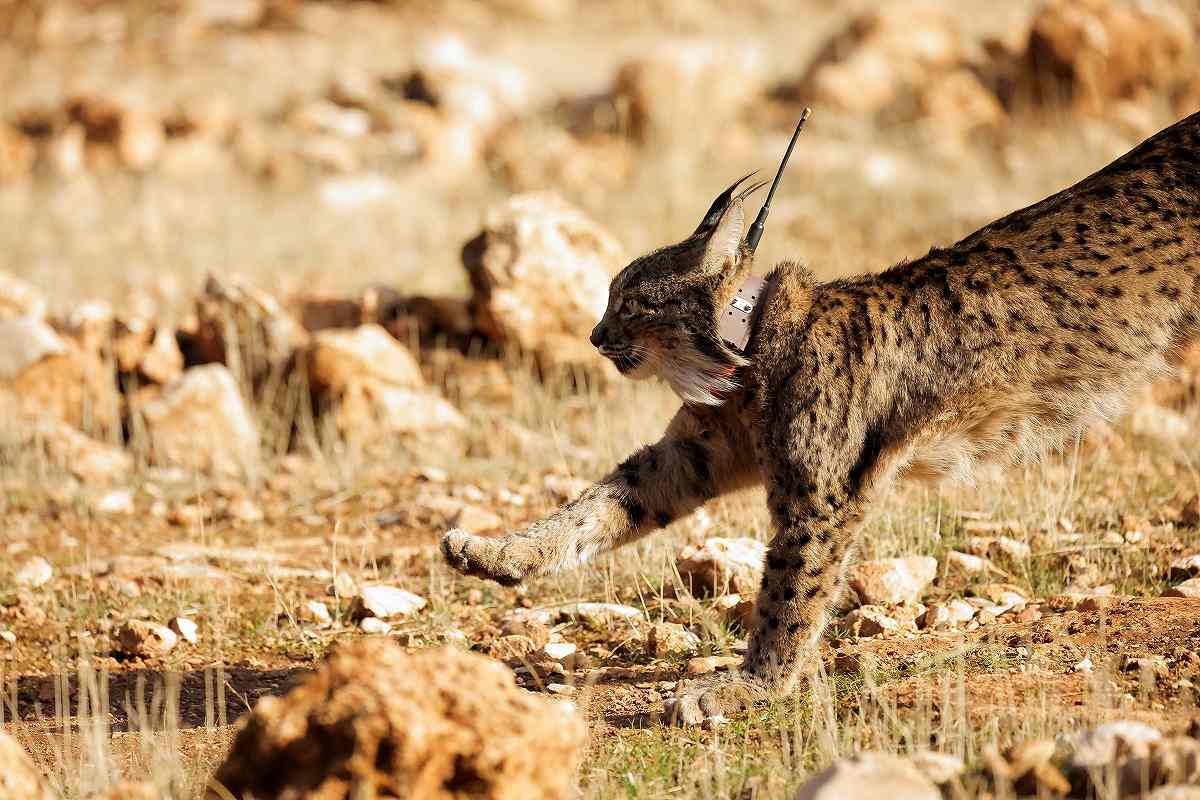
A female Iberian lynx named Ilexa is released with other four lynx, in Iznalloz, Spain, on Dec. 19, 2022.
15:37 JST, January 19, 2023
IZNALLOZ, Spain (Reuters) — Five Iberian lynx have been released into the wild in southern Spain last month as part of an expanding breeding program aimed at conserving one of the world’s most endangered feline species with distinctive long black ear tufts.
Darting out of their crates one by one, Saturno and Sotillo, two male lynx bred in captivity, and two wild-born females, Solera and Ilexa, along with her kitten Terre, will be free to reproduce and populate the mountainous Sierra Arana area in the Andalusian province of Granada.
“It’s the specific objective of this project to create a reintroduction area here,” regional program coordinator Javier Salcedo said. “It’s another milestone for this project.”
In 2002, Iberian lynx were on the brink of extinction due to poaching, road accidents and encroachment on their habitat by farming. Only 94 specimens were registered in Spain and none in Portugal at the time.
By 2015, the International Union for Conservation of Nature (IUCN) downgraded the threat level to ‘Endangered’ from ‘Critically Endangered,’ which Spain’s Environment Ministry said was thanks to the ongoing conservation efforts.
In a major leap, the Iberian lynx population in Portugal and Spain rose above 1,000 at the end of 2020.
In Andalusia alone there are currently 522 Iberian lynx in different population nuclei of the region, said Guiseppe Aloisio, director of the regional forest and biodiversity department.
“This is Andalusia’s success. As a region it has been able to multiply by five the critical census we had 20 years ago,” he told reporters after the release of the five wild cats.
In order to be classified as non-endangered, the Iberian lynx population would need to exceed at least 3,000, including 750 breeding females, according to the WWF international wildlife preservation group.
"Science & Nature" POPULAR ARTICLE
-

Genome Study Reveals Milestone in History of Cat Domestication
-

Big Leap in Quest to Get to Bottom of Climate Ice Mystery
-

Japan Set to Participate in EU’s R&D Framework, Aims to Boost Cooperation in Tech, Energy
-

Paws on Parade: Nairobi’s Dogs Dazzle at ‘Pawchella’
-

Japan’s H3 Rocket Failed in Latest Launch, Says Official
JN ACCESS RANKING
-

Tokyo Economic Security Forum to Hold Inaugural Meeting Amid Tense Global Environment
-

Keidanren Chairman Yoshinobu Tsutsui Visits Kashiwazaki-Kariwa Nuclear Power Plant; Inspects New Emergency Safety System
-

Imports of Rare Earths from China Facing Delays, May Be Caused by Deterioration of Japan-China Relations
-

University of Tokyo Professor Discusses Japanese Economic Security in Interview Ahead of Forum
-

Japan Pulls out of Vietnam Nuclear Project, Complicating Hanoi’s Power Plans


























